Vango Classic Instant 300 review: a festival-goer's dream tent
Super quick to pitch and pull down, this reasonably priced tent is spacious, tall and well-featured for festival use

Ideal for festivals, garden sleep-outs, and summer car camping, the Vango Classic Instant 300 tent is quick to pitch and easy to pack away. It offers great functionality and thoughtful features and is affordably priced, leaving you enough to enjoy your events without hassle.
-
+
Very quick to pitch and drop
-
+
Loads of headroom and internal space
-
+
Two doors and porches
-
+
Doormat on both sides
-
+
Great price
-
+
Selection of colours
-
-
Long pack size
-
-
Flysheet sits too close to inner
-
-
Single zip on main doors gets annoying
-
-
No black-out on the inner
-
-
Top-loading storage bag can be fiddly
Why you can trust T3

I spend a lot of time testing the best backpacking tents on the market, but in summer, I keep finding myself at events and festivals where these often expensive and typically time-consumingly technical tents are far from the best tools for the task.
When you’re at an event or meeting friends for a car camping catch-up, you just want a simple festival tent that virtually puts itself up so you can unroll your trusty lightweight sleeping bag and self-inflating camping mat and then grab a cold drink and start enjoying the entertainment. The Vango Classic Instant 300 is exactly that tent.
The problem with even the best pop-up tents, however, is that they might be easy to erect, but they often prove painful or nigh-on impossible to pack away again, with complex folding requirements that festival-fried brains are simply not equipped to deal with, so you end up driving home with half your car taken up with a catastrophe of fabric and partially dismembered poles.
Would this be the case with the Instant 300? There was only one way to properly find out – I’d have to take it to a festival. The first event on my calendar was more of a multiday celebration of trail-based shenanigans (running, biking, hiking) than a full-on festival, but the Top of the Gorge weekend of adventure in Somerset still allowed me to put this event tent to the test. Read on to find out how it measured up.
Vango Classic Instant 300 review
Price and availbility
The Classic Instant 300 tent is available now in three fairly bright colours, either directly from Vango or through selected retailers.
Specifications
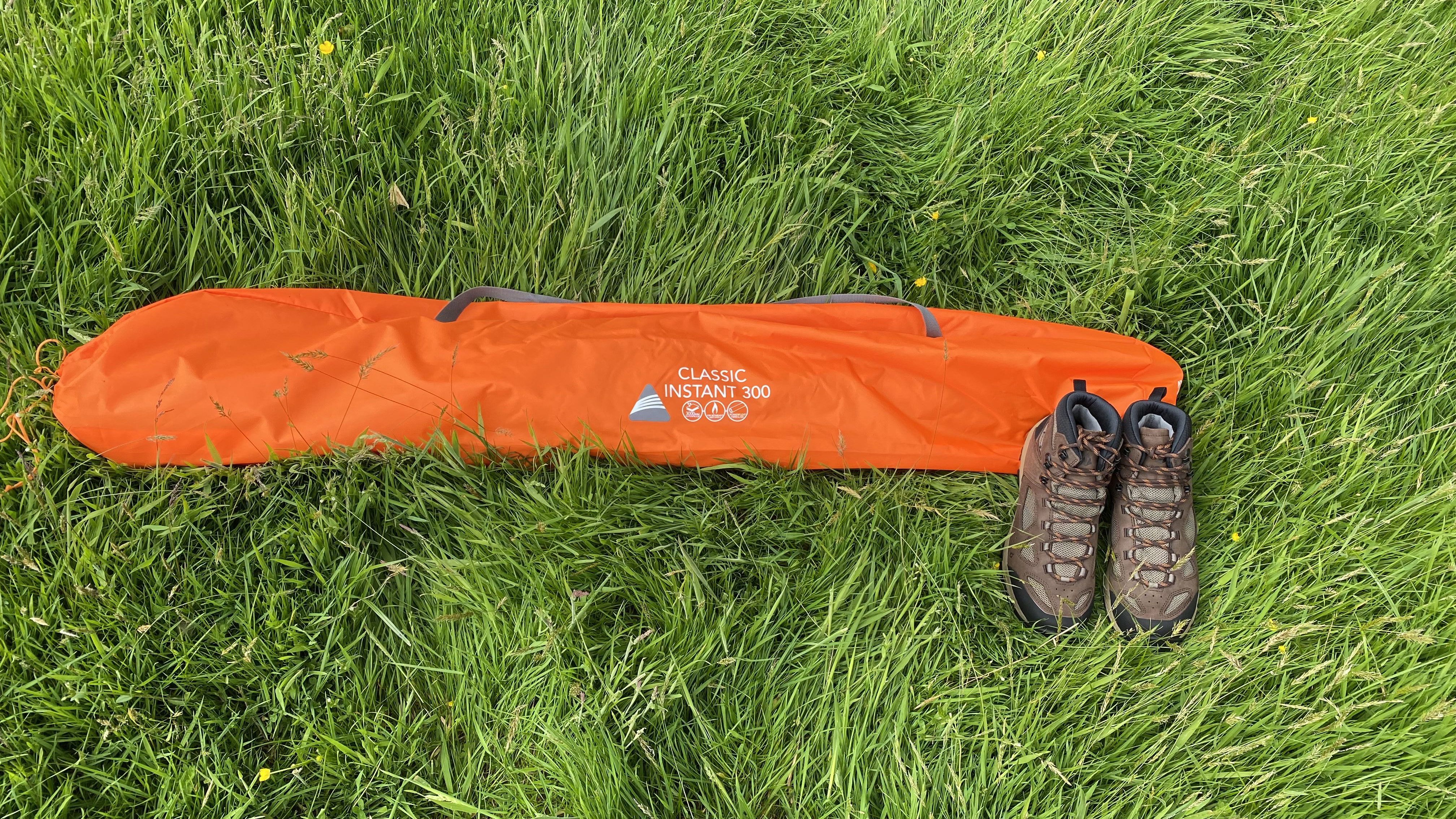
- Guide price: £160
- Style: Pop-up tent
- Pack size (L x H x W): 44 x 18 x 18cm
- Inner pitched dimensions (L x W x H): 215 x 195 x 140cm
- Weight: 7kg
- Seasons: 1 (summer)
- Capacity: 3 people
- Vestibules: 2
- Flysheet hydrostatic Head rating: 3000 HH
- Pitch time: 2 minutes
- Colours: Deep blue / Geo Pattern / Orange
Design and ease of pitching
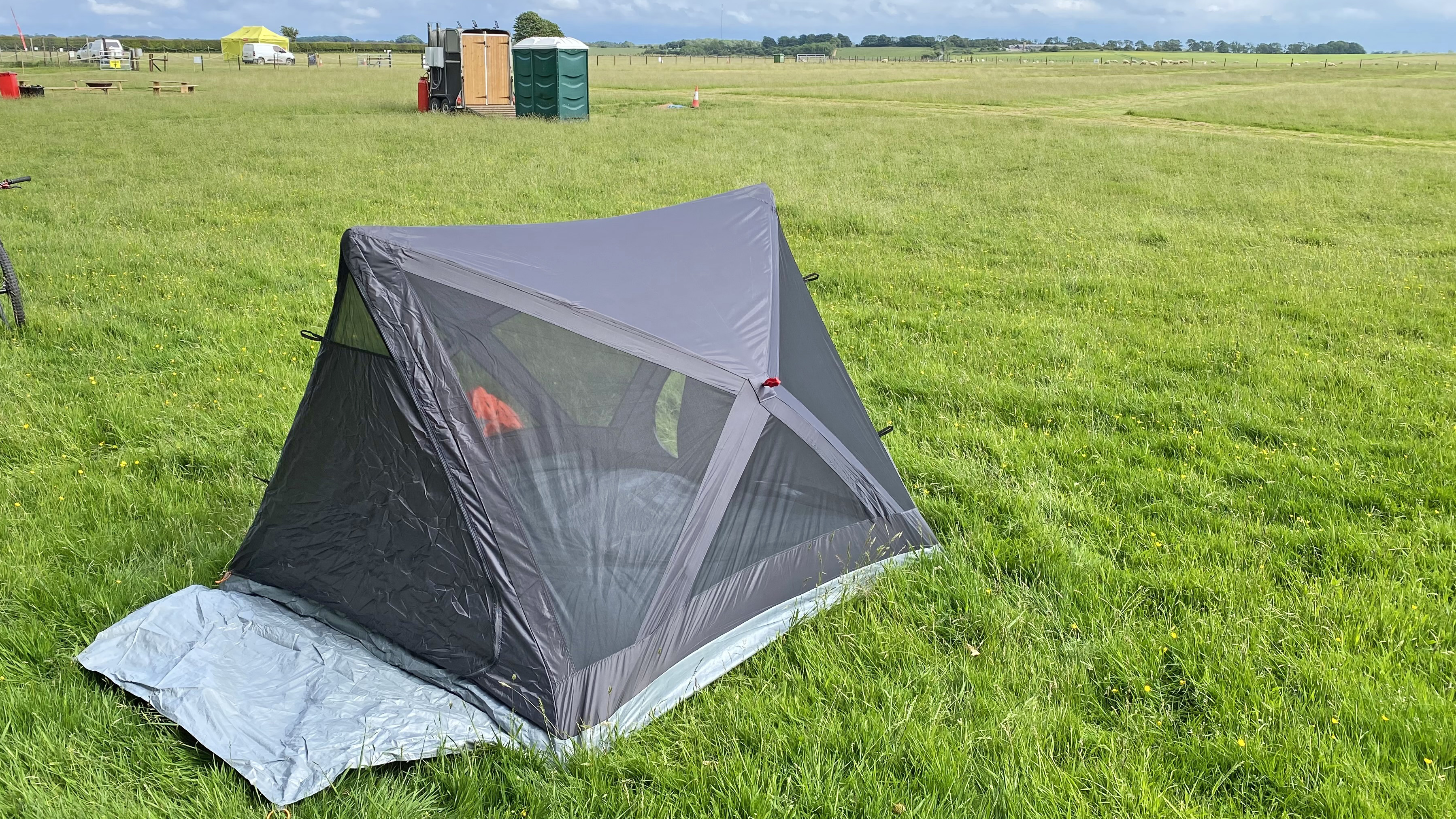
Never before have I finished putting up a tent and then realised I hadn’t used any of the supplied poles, but that’s exactly what happened the first time I pitched the Classic Instant 300. More about this below, but part of the reason this left me so bamboozled is because the tent had apparently gone up so ridiculously quickly and easily, and it looked finished and ready to use.
The instructions (which I actually read, honestly) state that you need at least two people to put the Instant 300 up, which was a shame because I was flying solo. Luckily, this advice was nonsense, and I was able to pitch it on my own in a couple of minutes.
It really is dead simple: you peg out the main tent and then pull the two sides into position (the integrated structure provides the tension, and they ‘pop’ into place when you pull outwards on a pair of hoops) – or, if you’re on your own, as I was, you can unzip the door, kneel inside and push the sides out.
Once this is done, you simply throw the flysheet over the top, secure it to either side of the main structure, and then put the rest of the pegs in. Voilà! You're good to go.
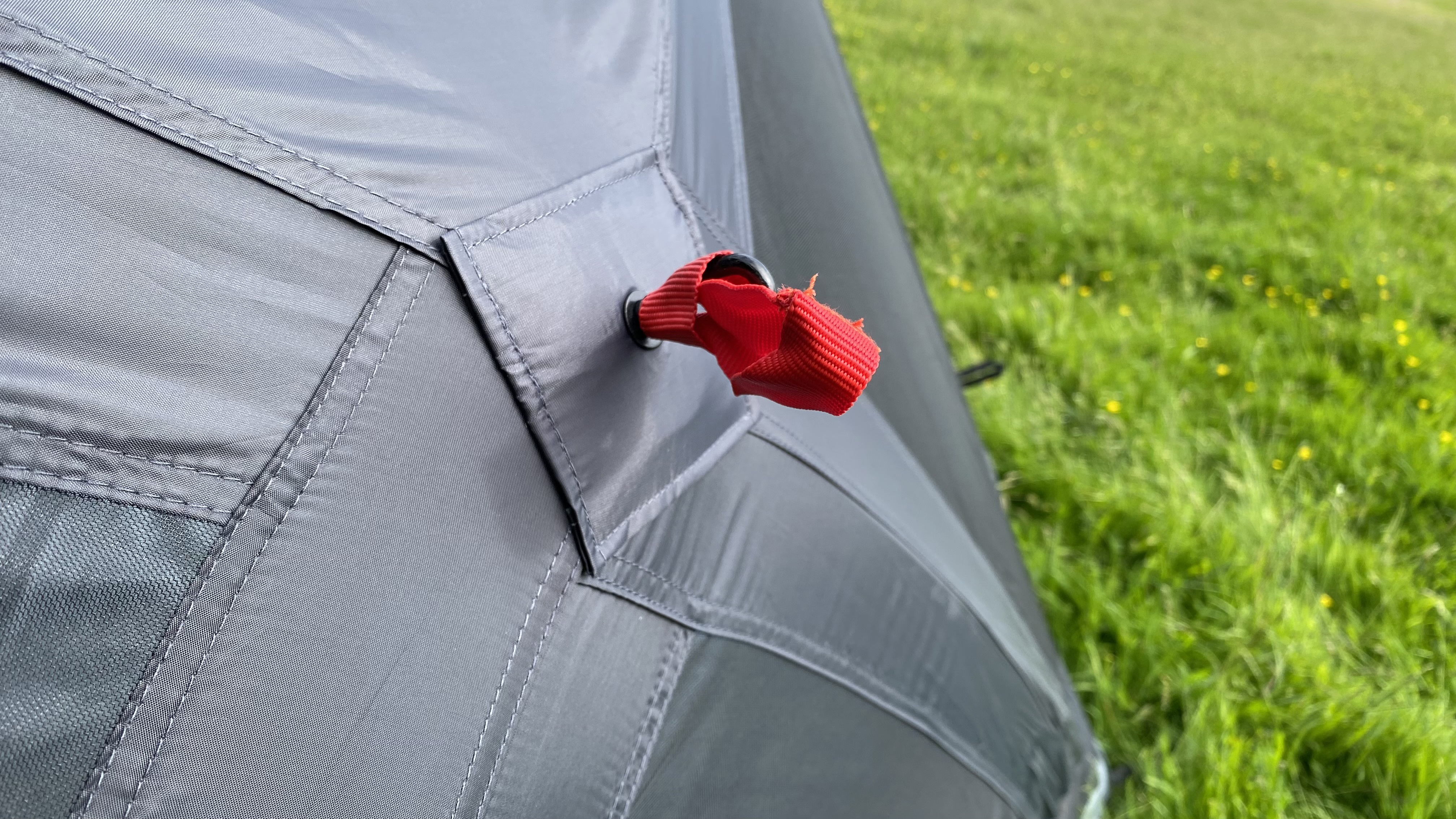
This tall tent is identical at both ends, so you don’t even need to faff around working out which way around the flysheet needs to go. Both ends have a large C-shaped door, which leads to a reasonably spacious porch (tall, rather than long, intended for storing footwear and so on, instead of cooking camping meals on lightweight stoves and holding large hiking backpacks). A doormat-style flap extends from the inners, so you can take your shoes off and leave them somewhere dry. And you can either open the outer doors fully, and hold them back with ties, or have them half open.
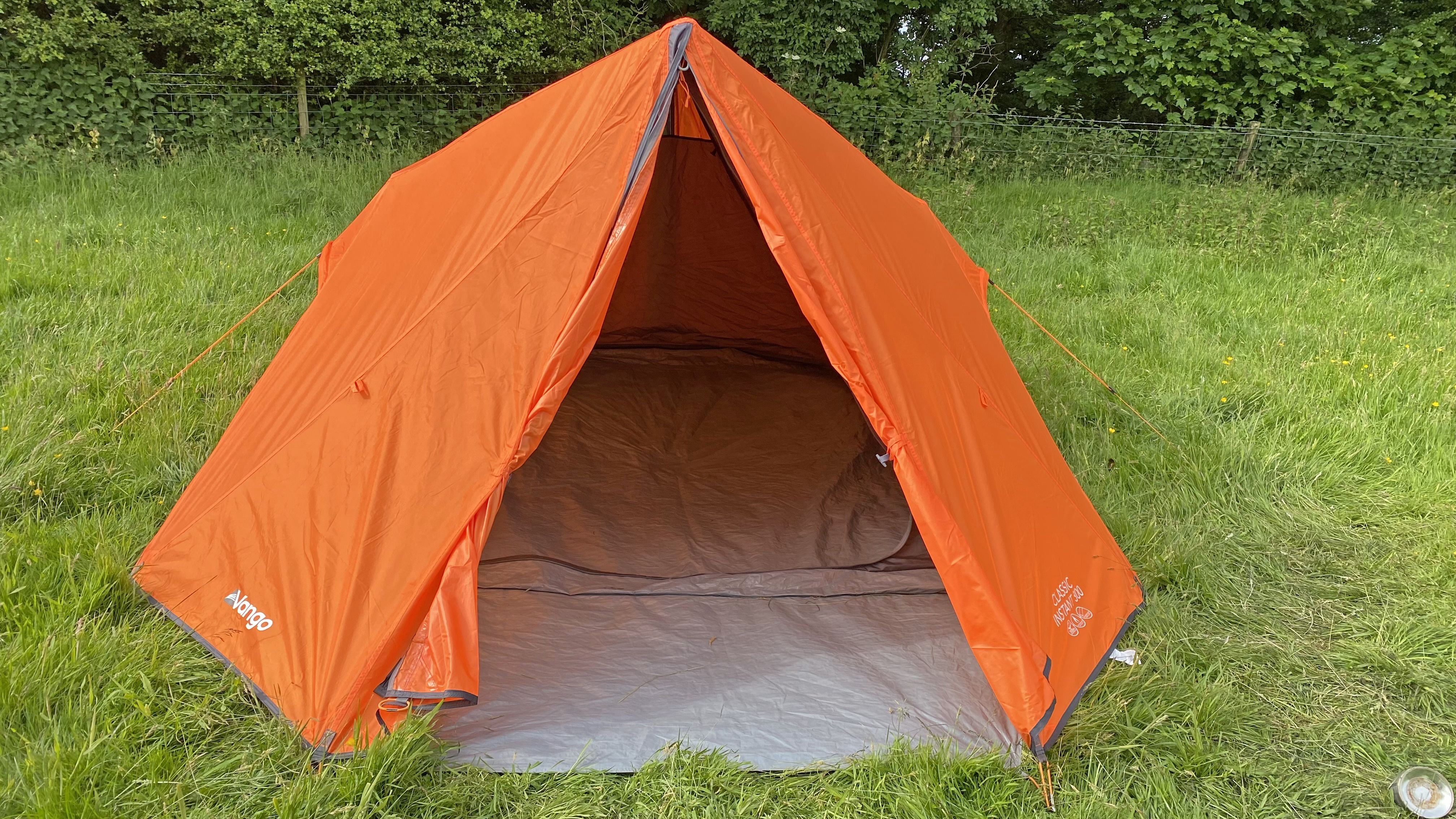
So far good, but what was I supposed to do with the two poles left in the bag? Consulting the instructions again, I figured out that the ends of each were supposed to be slotted into two pairs of holsters on the inside of the tent, running up to the ceiling close to both of the doors.
These seem completely optional, and while they provide some rigidity to the structure (helpful when zipping and unzipping the doors and reassuring during high winds, no doubt), they’re far from essential.
Given the intended use of this tent (which is definitely not designed for pitching on wild and windy mountainsides), I wonder whether Vango could have dispensed with them altogether without anyone being any the wiser.
The guy ropes provide good anchorage, and the flysheet's hydrostatic head rating is 3,000mm, which isn’t as high as many tents but is capable of coping with most conditions. There’s no real black-out provision on the inside of this tent, so it gets light and bright when dawn breaks.
Performance
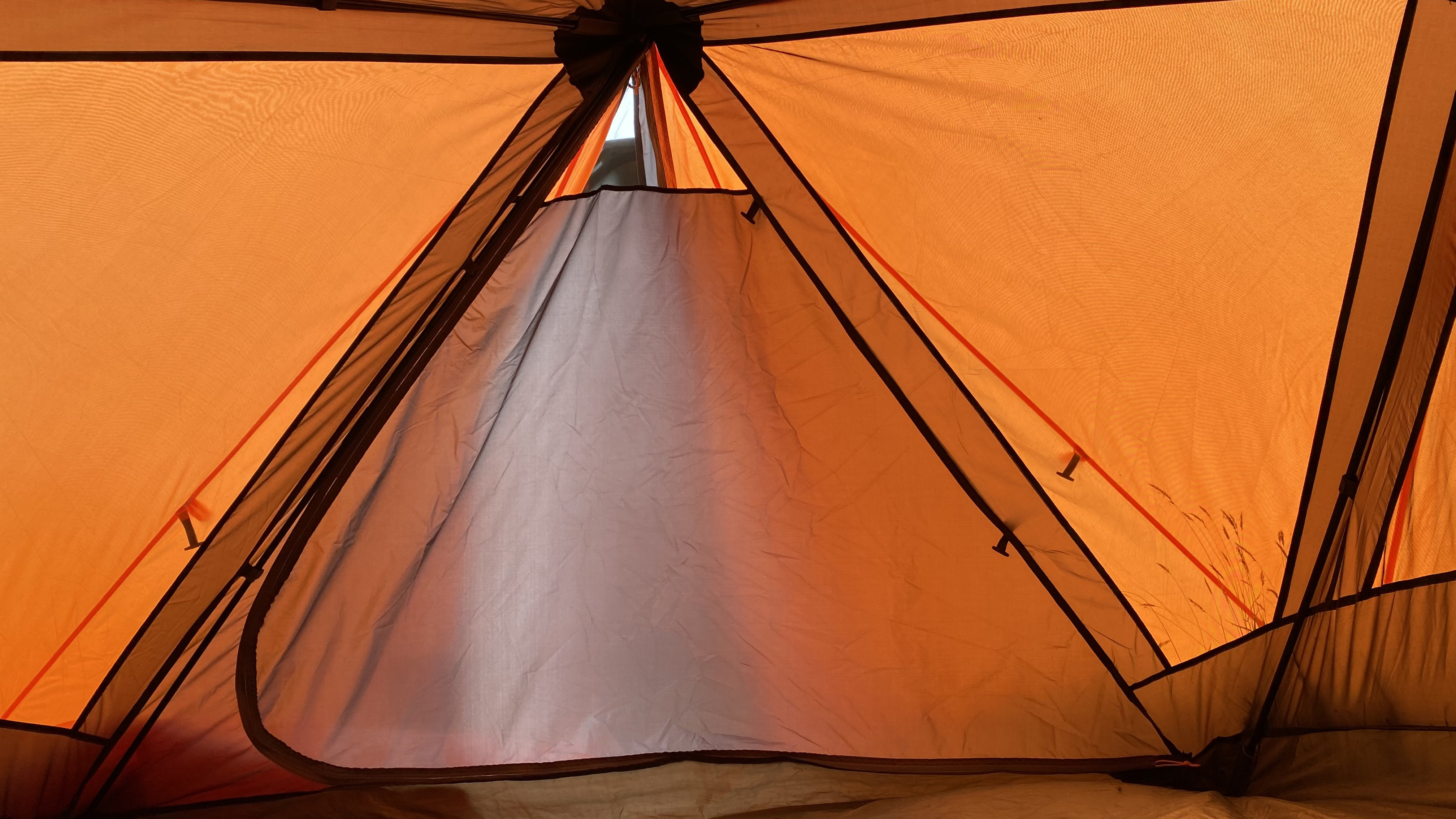
Beyond some initial bewilderment about the poles, I have been really happy with the speed and ease with which I can put the Instant 300 up (I’ve taken it to several events and camp-outs since that initial outing and typically don’t bother with the superfluous poles).
I’m a big fan of the design of the main tent and the huge amount of space and headroom it provides. The Instant 300 comfortably sleeps three people, with room remaining for some gear, too.
While it’s not quite tall enough for adults to stand totally upright, it is easy to get dressed inside the tent, and if you could conceivably have a couple of camping chairs in there for staying dry during wet-weather events, for example. There are also hoops and fixtures that allow you to hang head torches, lanterns and flashlights (or other gadgets, including outdoor speakers) up on the inner walls.
The twin-door design is great, providing a quick exit and entry route for considerate campers who don’t want to disturb their tent mates. This is especially good if nature calls during the night or if you are getting back from festival stages at different times.
A simple but fantastic feature is the double doormat built into the groundsheet of the tent, which protrudes into both of the porches and allows you to get muddy wellies, filthy walking boots or mucky hiking shoes off well before you get into the living space part of the tent.

On the downside, the main entrances on the inside of the tent only have one zip, so you have to take the zipper all the way to the end in order to close the door (a minor niggle, but it can get annoying).
More seriously, there doesn’t appear to be enough room between the flysheet and the non-waterproof material of the main tent, and consequently, they often end up touching, which can lead to drops and drips forming on the inside. This is far from ideal, but it’s a bit less serious in a pop-up tent designed for festivals and laid-back summer use such as this than it would be in a proper backpacking shelter.
And when it came to taking the tent down, I was soon back in my happy place. It’s almost as easy to drop and pack the Instant 300 as it is to put it up in the first place. You simply collapse the sides (by pushing them in) fold it and roll it up like a giant umbrella. It’s a bit of a pity you have to get the whole thing in the storage bag via a small top opening (a zip running along the length of the bag would have made things a lot easier), but at least the sack is plenty big enough.
Verdict
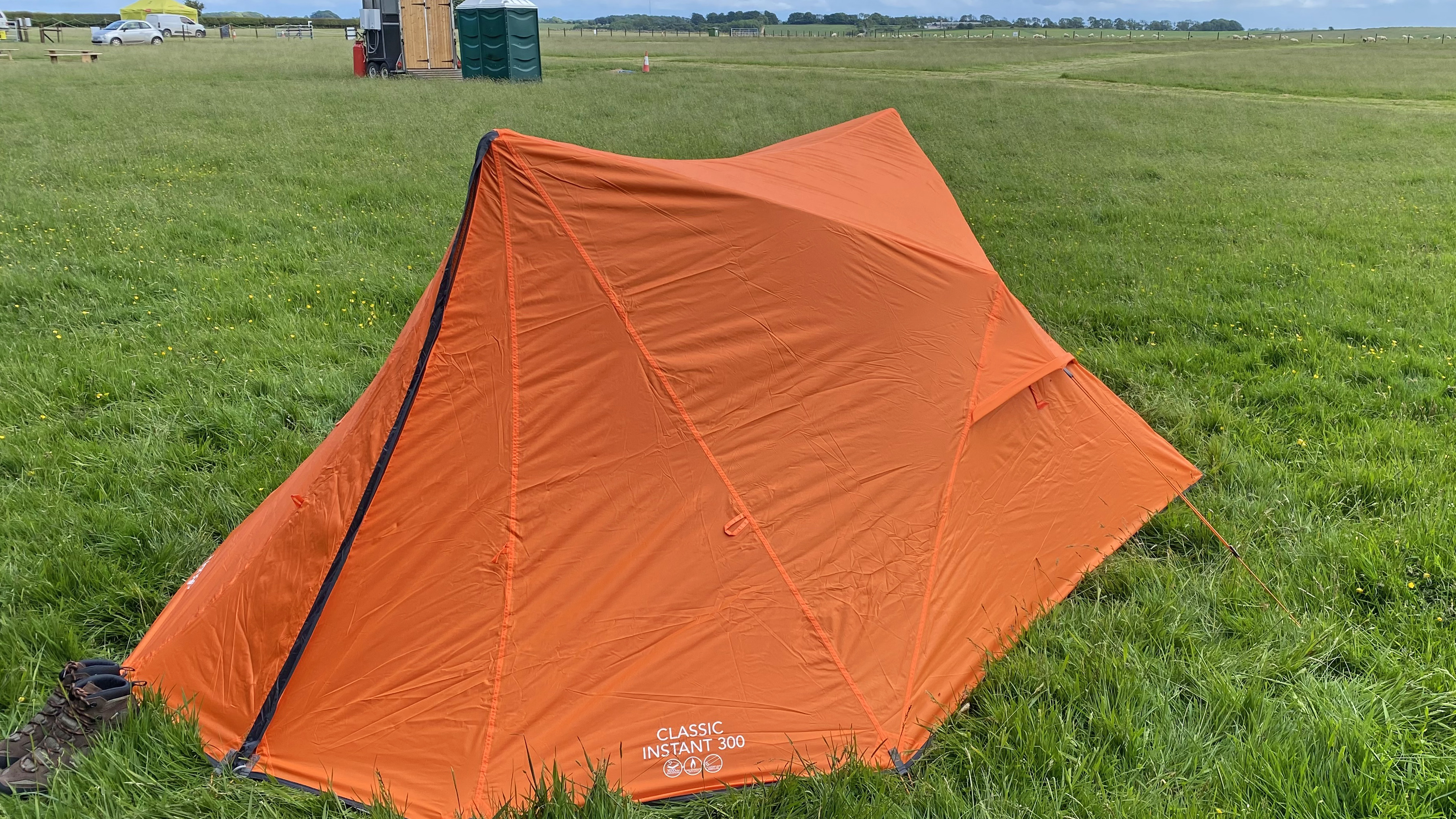
Due to its design and size, the Vango Classic Instant 300 is a quite a long tent to cart around in a standard car, but if you can fit it in your vehicle, it’s a brilliantly spacious shelter, providing ample room for two or three people (or even a young family of four) to sleep while camping in casual scenarios, such as festivals or overnight social gatherings. The headroom is great, and weighing in at 7kg, it’s considerably lighter and easier to carry than many other tents of a similar size, making it ideal for use at events where you might have to walk some distance from your vehicle to the camping area (and if you remove the non-essential poles, it’s even lighter).
Aside from its generous size, the big benefit of this pop-up tent is how easy it is to both pitch and pull down. All this, combined with the bargain pricetag, make it a good option for festival goers, small families and friends looking for a hassle-free fair-weather shelter for fun outdoor experiences throughout the summer.
Also consider
The Quechua 2-seconds easy Fresh & Black popup tent from Decathlon is another very reasonably priced quick-to-pitch tent that works well for car camping and festivals, and it has better black-out if you’re looking to avoid early morning light, but it doesn’t have the headroom or vestibule space offered by the Vango Classic Instant 300.
For a bigger, more family oriented air tent that can be put up quickly, check out the Coleman Weathermaster Air 4XL or the Vango Rome II Air 550XL, but these tents are massively heavier and more cumbersome to carry around and store.
Sign up to the T3 newsletter for smarter living straight to your inbox
Get all the latest news, reviews, deals and buying guides on gorgeous tech, home and active products from the T3 experts

Author of Caving, Canyoning, Coasteering…, a recently released book about all kinds of outdoor adventures around Britain, Pat Kinsella has been writing about outdoor pursuits and adventure sports for two decades. In pursuit of stories he’s canoed Canada’s Yukon River, climbed Mont Blanc and Kilimanjaro, skied and mountain biked across the Norwegian Alps, run ultras across the roof of Mauritius and through the hills of the Himalayas, and set short-lived speed records for trail-running Australia’s highest peaks and New Zealand’s nine Great Walks. A former editor of several Australian magazines he’s a longtime contributor to publications including Sidetracked, Outdoor, National Geographic Traveller, Trail Running, The Great Outdoors, Outdoor Fitness and Adventure Travel, and a regular writer for Lonely Planet (for whom he compiled, edited and co-wrote the Atlas of Adventure, a guide to outdoor pursuits around the globe). He’s authored guides to exploring the coastline and countryside of Devon and Dorset, and recently wrote a book about pub walks. Follow Pat's adventures on Strava and instagram.
-
 Android Auto could add a feature that nobody asked for, but might appreciate anyway
Android Auto could add a feature that nobody asked for, but might appreciate anywayThis futuristic addition to Android Auto could change the experience forever
By Chris Hall Published
-
 Supercharge your aerobic engine with this three-move rower workout
Supercharge your aerobic engine with this three-move rower workoutImprove your cardiovascular fitness and burn through calories
By Bryony Firth-Bernard Published
-
 Govee’s new smart light is minimalist, modern...and weirdly familiar
Govee’s new smart light is minimalist, modern...and weirdly familiarNo, you can't hang your washing on it
By Lizzie Wilmot Published